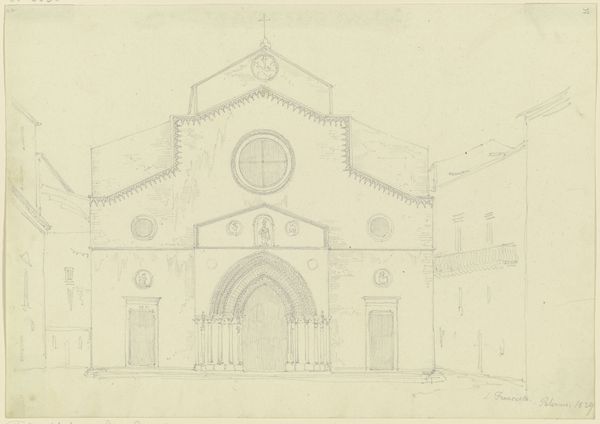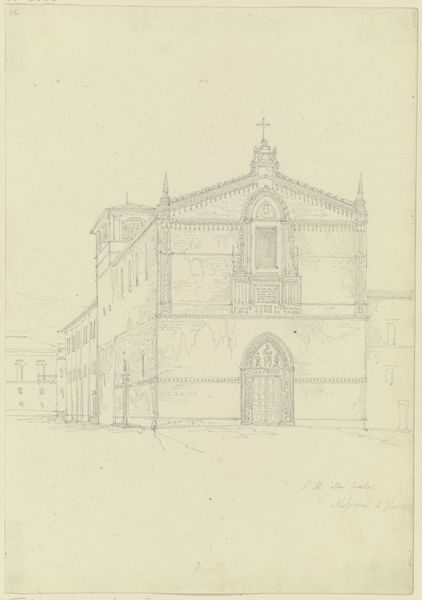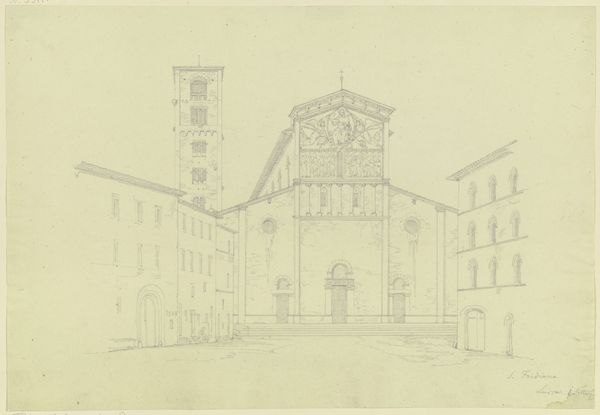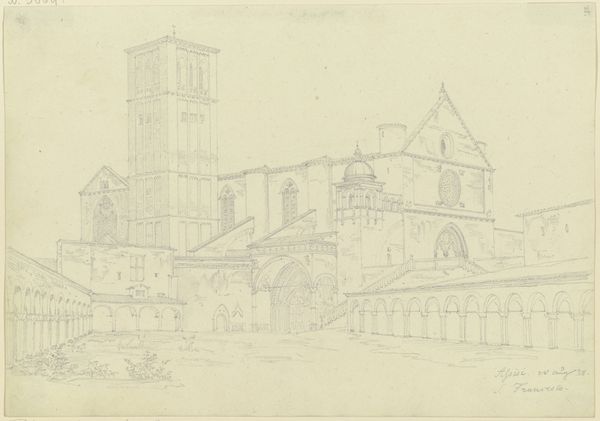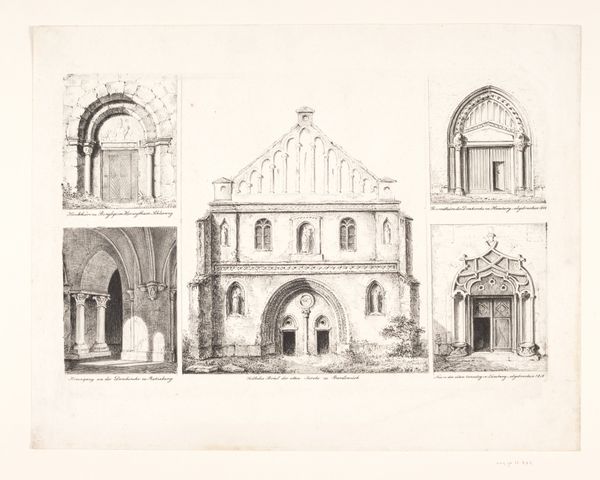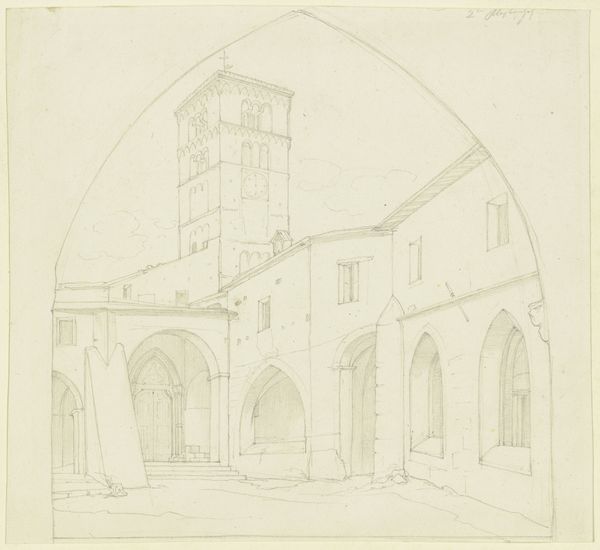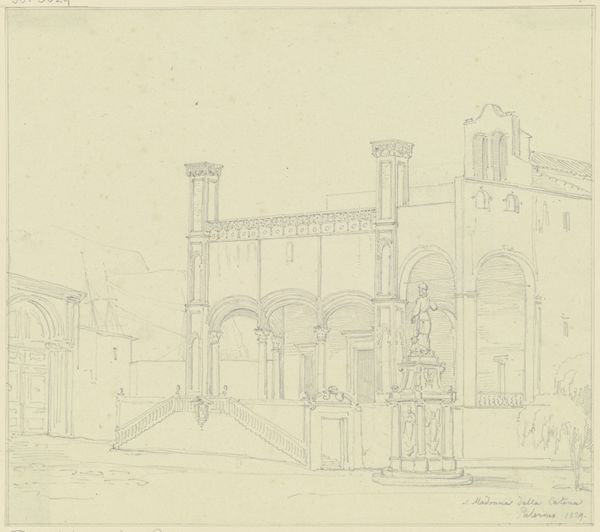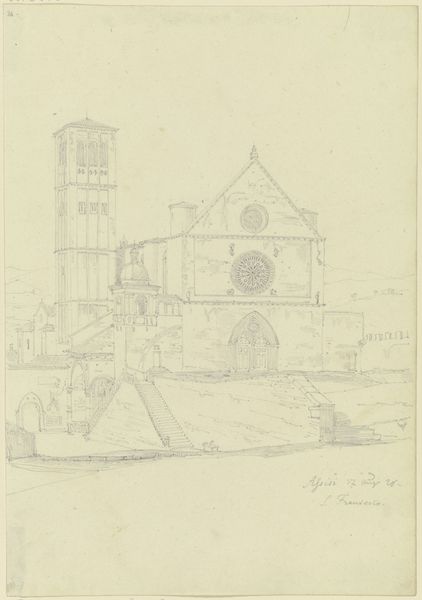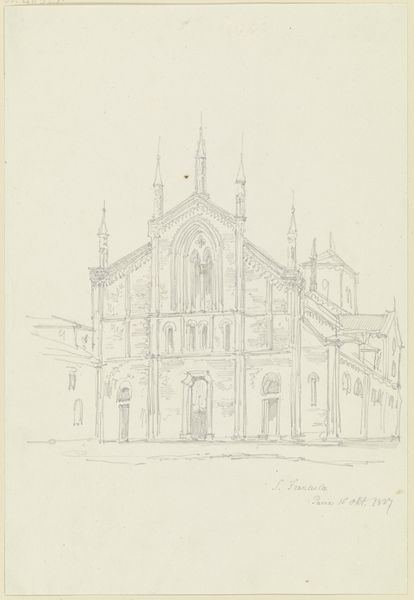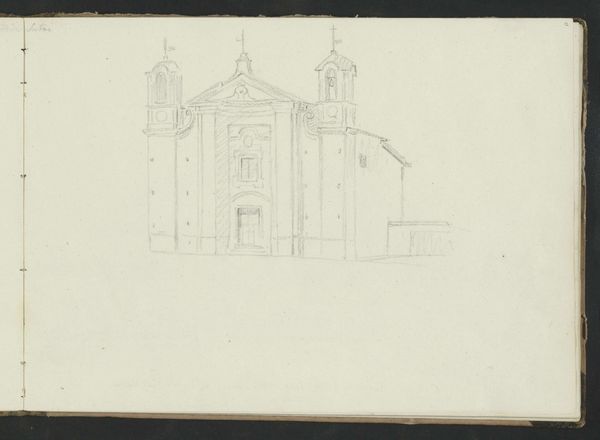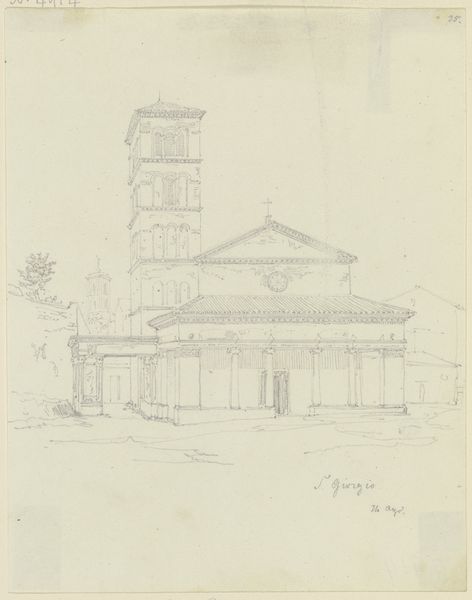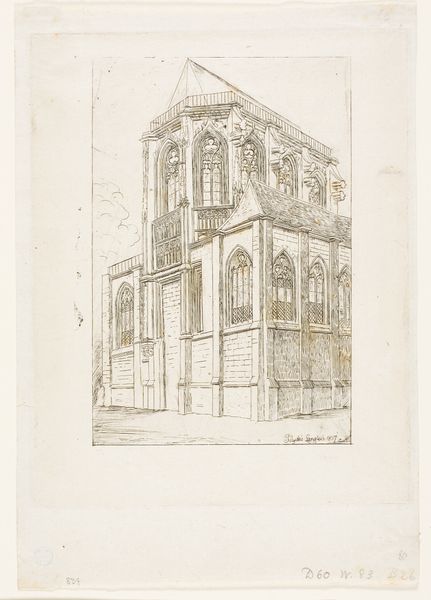
drawing, pencil, architecture
#
architectural sketch
#
drawing
#
16_19th-century
#
landscape
#
etching
#
pencil
#
line
#
academic-art
#
architecture
Copyright: Public Domain
Curator: Before us, we have Friedrich Maximilian Hessemer's "S. Paolo a Ripa d’Arno in Pisa," a drawing likely completed around 1830 and now residing here at the Städel Museum. Editor: The initial feeling is one of quiet monumentality. The muted tones, the sheer scale implied by the architectural rendering... It speaks of a serene strength. Curator: Absolutely. Hessemer meticulously captures the facade of this Pisan church. It’s fascinating to consider the socio-economic context. The labor invested in erecting such structures, the social implications of the church's dominance in Pisa at the time… And the materials themselves—where did they originate? How were they transported? Editor: I'm struck by how the line work, predominantly pencil and perhaps some etching, defines the overall composition. Notice how Hessemer uses subtle gradations of tone to suggest depth, particularly around the arches and doorways. It’s a structured approach, really revealing an academic's precision, don't you think? Curator: Precisely. This is no mere artistic fancy; it is an architectural study. And one that begs the question: what kind of workforce would have been required for this elaborate structure, what skills were required to carve these geometrical features? What's often overlooked in pieces like these is the crucial part played by the unsung workers who materially make such wonders possible. Editor: Still, stepping back, it’s difficult not to get wrapped up in its symbolism. The arches, the symmetrical facade... a divine sense of order reflected by line, tone, and form. It evokes spiritual contemplation. The meticulous details serve a more profound expressive need to touch upon the ethereal quality that lies above, doesn't it? Curator: Undeniably, but Hessemer doesn't just reproduce, but also interprets. This artwork shows an industrial method to making art, and how the conditions and the artistic materials intertwine, and together make architectural visualization practices possible. Editor: Ultimately, viewing this, I am reminded how potent the relationship is between the material and immaterial; where objective recording meets ethereal resonance in the art. Curator: And it’s how the hands who built the place influenced this etherealness, and how this, indeed, changed their hands forever too. Thank you for the experience!
Comments
No comments
Be the first to comment and join the conversation on the ultimate creative platform.

